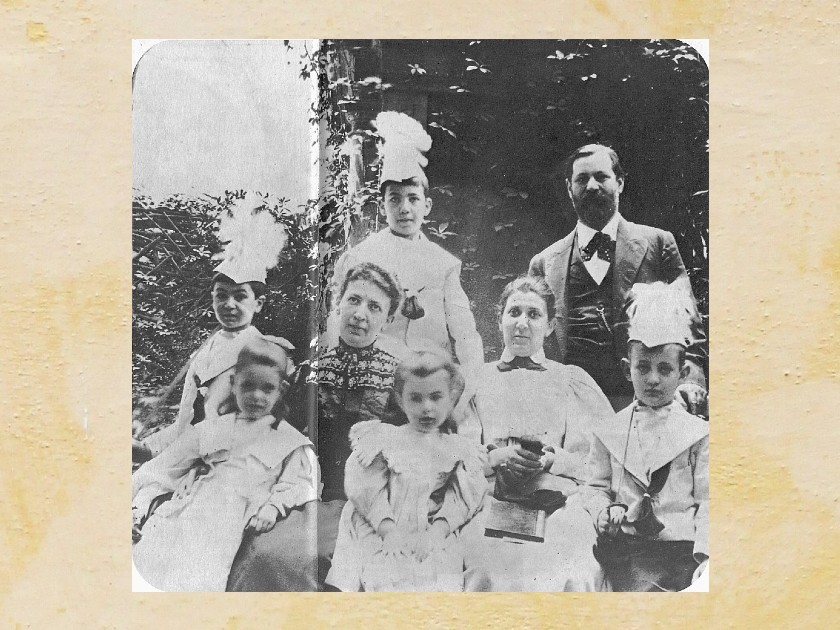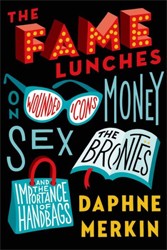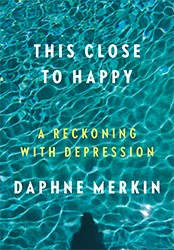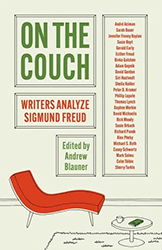
Photograph of the family of Sigmund Freud, 1898. Front row: Sophie, Anna, and Ernst Freud. Middle row: Oliver and Martha Freud, Minna Bernays. Back row: Martin and Sigmund Freud.
September 29, 1939, 20 Maresfeld Gardens, Hampstead, London: The first Friday after Sigmund Freud’s death, having accepted more than half a century’s imposed impiety at her husband’s insistence, seventy-eight-year-old Martha Freud started lighting Sabbath candles again. Licht-benching, as the ceremony is called. You light a pair of candles just as the sun goes down; circle your hands in a sweeping motion three times as if to gather the light and savor the candles’ warmth, the spirit of restfulness they are meant to convey; then you cover your eyes with your hands while reciting the blessing: Baruch ata adonai, elohenu melech ha’olam, asher kid- shanu be-mitzvotov ve-tzivoni, le’hadlik ner shel Shabbat.
Enter Shabbat Ha’Malkah, Shabbat the Queen, a presiding feminine presence in a patriarchal environment where most of the active, time-specific mitzvot, or injunctions — such as the putting on of tefillin, or phylacteries (a pair of small black leather cubes, con- taining pieces of parchment inscribed with Biblical verses, one of which is strapped around the left arm, hand, and fingers and the other of which is strapped above the forehead) for the morning prayers — fall on men, since women are presumed to be busy with other priorities, such as housekeeping and childcare. And now here was the widow of one of the most formidable enemies of religion fulfilling one of the few obligations incumbent upon women under Judaism. It was, surely, a form of poetic justice — or perhaps a testament to the hold of the past, however abjured it may be.
She was born Martha Bernays on July 26, 1861, in Hamburg, into a highly regarded and intellectually advanced family to whom such recurrent observances meant a great deal. With her performance of the act of lighting candles at a prefigured moment on the Jewish calendar, one might argue that Martha Freud was being more than assertive; she was being defiant. In doing so, she was taking a step backward toward the lively, book-loving girl she had been and the traditionalism of her origins before she became the more compliant, devoted caretaker that Freud desired her to be: the “adored sweetheart in youth” who became “the beloved wife in maturity.”
She was also taking a step forward, toward the postspousal woman she would become (she outlived her husband by twelve years), reclaiming a small part of the ancient, ritual-laden religious tradition that had been instilled in her while she was growing up. It was a tradition that her avidly secular husband (whom she always referred to as “Professor,” as though she were his eternal student) ridiculed, forbidding her to light Friday night candles when they set up their own home.
According to Freud’s Women, by Lisa Appignanesi and John Forrester, a cousin of Martha recalled “how not being allowed to light the Sabbath lights on the first Friday night after her marriage was one of the most upsetting experiences of her life.” And one visitor to their house, the philosopher Isaiah Berlin, observed that husband and wife were still arguing the issue of lighting candles, however playfully, as late as 1938: “Martha joked at Freud’s monstrous stubbornness which prevented her from performing the ritual, while he firmly maintained the practice was foolish and superstitious.”
All the same, the Freud marriage was reputed to have been exceptionally harmonious — one of their few disputes over fifty-three years was said to have been about the correct way to cook mushrooms. While her husband worked up to sixteen and occasionally even eighteen hours a day, Martha (also known as Frau Professor) carried around an enormous bunch of keys, the better to oversee a household that included a cook, a governess, and a nanny, and keep it running like a well-oiled machine. Lunch was served promptly at one every day, a formal meal often featuring tafelspitz (boiled beef and vegetables, with a horseradish sauce), a favorite of Freud’s. The Freuds’ six children were well behaved, having had instilled in them the importance of their father’s work. As one of Freud’s sons, Martin, noted in his reminiscences: “There was never any waiting for meals: at the stroke of one everybody in the household was seated at the long dining-room table and the same moment one door opened to let the maid enter with the soup while another door opened to allow my father to walk from his study to take his place at the head of the table at the other end.” The critic Jenny Diski suggested in a 2006 review of a translated biography of Martha Freud by Katja Behling in the London Review of Books that the exemplary bourgeois surface Martha helped provide — “the rigid table manners, ordered nursery and bustling regularity” — enabled her husband to organize his “deeper, hardly thinkable thoughts” into “something that looked like a scientific theory. By polishing that surface and keeping clocks ticking in unison,” Diski concludes, “Martha was as essential to the development of Freudian thought as Dora or the Rat Man.”
Still, the couple’s divergent attitudes toward Judaism remained a source of underground conflict. On the face of it, they were wholesale de-Judaized Jews, celebrating Christmas and Easter; their son Martin recalled that none of the six children had entered a synagogue, and it is commonly assumed that neither Martin nor either of his two brothers was circumcised. Freud, a confirmed atheist with little tolerance for religious belief in any form, would delight in ribbing Martha about her religious attachment, pretending not to know the Hebrew name for “candelabrum” in a note he wrote her in 1907 after visiting the Roman catacombs: “In the Jewish [catacombs] the inscriptions are Greek, the candelabrum — I think it’s called Menorah — can be seen on many tablets.” As if he didn’t know that it was called a menorah!
Although Freud never denied his Jewishness and went so far as to credit his religion with a lack of prejudice and an uncowed single-mindedness, he also went to great lengths to separate the theories and practice of psychoanalysis from both the religious and the Jewish, especially given how anti-Semitic thinkers attributed a Jewish character to his work, which in turn led to a resistance to their views. But, Freud wrote in a letter to Ferenczi, “there should not be a thing as Aryan or Jewish science. Results in science must be identical, though the presentation of them may vary.”
To better understand the Freuds’ respective positions on the issue of Jewishness, one need go no further than their immediate backgrounds. Whereas Sigmund Freud came from an Enlightenment-influenced assimilated Viennese family, Martha’s background was one where traditional observances were scrupulously maintained. Her mother, Emmeline, wore a sheitel, or wig, and was a tenacious and domineering personality though outwardly coming across as mild and soft. (These traits would antagonize her future son-law; he described her as “alien” and wrote his fiancée that “I seek for similarities with you, but find hardly any.”)
Martha’s family was renowned in the Jewish community for their scholarship and leaderly qualities. Isaac Bernays, her grandfather, was the chief rabbi of Hamburg; upon his death, he was acknowledged by no less a figure than Heinrich Heine to have been an extraordinary personality. (Despite Bernays’s strict commitment to Orthodoxy, he was considered to be something of a religious modernizer, known for his innovative sermons and for his willingness to incorporate German into the synagogue service. In an odd coincidence, my great-grandfather, Samson Raphael Hirsch, was a student of Bernays and followed in his tradition of bringing together Jewish and secular realms.) Two of Martha’s paternal uncles were university professors: one, Jacob, was a classicist whose adherence to religious convictions prevented him from becoming a full professor at Bonn University; the other, Michael, was a Goethe and Shakespeare specialist who converted to Christianity and was baptized, which estranged him from his family at the same time as it furthered his career. Martha’s father, Berman Bernays, was a merchant, as were the parents of his wife; her father later became the secretary to a well-known economist and constitutional law expert named Lorenz von Stein, and when Martha married in 1886 his profession was given as “journalist.” Martha grew up in fairly modest circumstances, and when she was six her father served a stint in prison for criminal fraud; she is said never to have talked of this incident. (Freud’s uncle was imprisoned for trading in counterfeit rubles, and rumor had it that his father was implicated in the scandal. Diski argues in her London Review essay that the couple was united by the legacy of public shame.)
Who was Martha Freud, and why is she so hard to find?
The family moved to Vienna when she was eight, and one of two elder brothers, Isaac, died at the age of sixteen, when she was eleven — a kind of loss she shared with Freud, who also lost a brother early on. Despite being portrayed in later years as culturally indifferent (in particular to her husband’s profession), Martha developed an interest in art and literature during her years at school. She had a keen appreciation of music and was an avid reader who knew the German classics and some world literature; during their courtship, Freud shared his thoughts on John Stuart Mill with Martha, and his first present to her was a copy of David Copperfield, although he warned her off the rude parts in Don Quixote. By the time he met Martha in April 1882, her sharp mind, attractive appearance, and coquettish charms had attracted many suitors, and she had already turned down one proposal of marriage.
______
One of the more intriguing questions about the Freuds’ marriage, especially given Freud’s own interest in the age-old problem of how to maintain both passion and durability in a connubial relationship, was the conspicuously deromanticized and possibly desexualized nature of his own marriage after its romantically impassioned beginning. (The analyst Martin Bergmann quipped: “We have wonderful courting letters before marriage. After marriage we only get laundry letters. It’s all practical. We don’t have a single love letter after marriage.”)
The union produced six children in nine years, after which the couple decided to practice abstinence as a means of contraception. (Freud believed that birth control led to neurosis.) Freud made a reference in a letter on October 31, 1897, when he was forty-one, to his colleague Wilhelm Fliess, about ceasing connubial relations: “Sexual excitation is of no more use to a person like me,” although he hinted at some incidences of sexual intercourse with Martha later on, recording in his diary at age sixty that he had “successful coitus Wednesday morning.” He also wrote to Fliess that he often suffered from impotence. One paper I have read argues that Freud’s decision to abstain from sex, although ostensibly to avoid having more children, may have stemmed in part from a desire to get back at Martha for her sexual retreatism during their prolonged engagement.
______
This is as good a moment as any to mention the speculation, originally started by Carl Jung and fanned over the decades by Peter Swales, also known as “the guerilla historian of psychoanalysis,” that after ceasing to sleep with his wife Freud had an affair with his sister-in-law Minna Bernays, Martha’s smart, witty, and acerbic younger sister. The two had corresponded while Freud was pursuing Martha, and they had a companionable relationship, not least because they lived together in the same household for forty years — first on Berggasse 19 in Vienna, where Minna moved in in 1896, and then at 20 Maresfeld Gardens in Hampstead, London. Indeed, the sleeping arrangements in Vienna were weirdly intimate: Minna’s small sleeping quarters were right next to Freud and Martha’s bedroom, separated only by a flimsy partition rather than by a wall and door. The only way Minna could get to her room was to go through the bedroom that the Freuds shared.
______
Who was Martha Freud, and why is she so hard to find? Was she really just a contented Hausfrau, an efficient manager of a household staff, a firm but affectionate mother (although she and Anna, Freud’s youngest daughter and his torchbearer, were not particularly sympatico), and most of all, a devoted wife who “tried as much as possible,” as she wrote in a condolence letter after her husband’s death, “to remove the misere of everyday life from his path”? Assuming that Freud’s theories on everything from domesticity to sexuality to pathological conflict were drawn even partly from his own experience, what influence did Martha’s personality and the couple’s interaction have on psychoanalytic theory? It’s hard to imagine her living with him for fifty-three years and not having had some impact on him beyond making sure his lunch of boiled beef was served on time. Why, then, does she appear to be of so little interest or consequence to the many biographers of her husband? (There has been one biography of her, written in German, as well as a novel called Mrs. Freud translated from the French; both books were published in 2005. There is also a short memoir by the Freuds’ longtime housekeeper, Paula Fichtl, that I had translated from the German but that didn’t add much except for a spirit of adulation for Herr Doktor and admiration for Martha’s capable handling of the household and the vicissitudes of their life together).
Is Martha’s featureless, sphinxlike presence an odd gap in the story — a patriarchal glitch in and among the hermetic, all-consuming narrative of male genius — or does it point to some deeper absence, some way in which Martha willingly went along with being sidelined from her husband’s larger concerns the better to ensure a peaceful home life from which Freud could venture out with his unconventional, often alarming theories? One might argue that in a certain fashion she was her husband’s muse, albeit not a particularly glamorous one, but more the consistent, enabling figure who helped him freely roam about in his head. It was perhaps Martha’s very ordinariness — her “fully developed and well integrated” personality, as Ernest Jones put it — that offset the damage and abnormality that Freud found everywhere he looked.
Still, Freud’s attitude toward Martha, which verged on the fondly dismissive, is not irrelevant to the sense one has that psychoanalysis missed out on some of the big questions, particularly about women, and fell short of its liberating aspirations. But it seems too easy to dismiss her as a martyr, unless one adds that she was a willing and seemingly contented one. Not every wife, no matter how intelligent, wishes to compete with her husband’s aura. One might even see Martha’s suspension of self as an example of “altruistic surrender,” which was the term her daughter Anna Freud coined for children who abjure the primacy of self in the service of another. In any case, Martha seems to have gone through something of a change after her husband’s death at the age of eighty-three in September 1939 after several years of excruciating jaw cancer. Aside from lighting Shabbos candles, she took to reading again and even developed a curiosity about Anna’s patients, marveling at how expensive child analysis was. Although she said life had “lost its sense and meaning” without her husband, she appears to have relished being at the center of the crowd of doting visitors who came to pay homage and to have continued on with her orderly, energetic existence. She outlived her husband by twelve years, dying at the age of ninety, taking the mystery of who she was with her.
Excerpted from the anthology On the Couch: Writers Reflect on Sigmund Freud, edited by Andrew Blauner published by Princeton University Press.
Daphne Merkin is a novelist, memoirist, and literary critic who writes for many publications, including the New York Times Book Review, the Atlantic, the New York Review of Books, and Airmail. She is the author of This Close to Happy: A Reckoning with Depression, and two collections of essays, Dreaming of Hitler and The Fame Lunches. Her first novel, Enchantment, has been reissued with an intro-duction by Vivian Gornick and her most most recent book is the novel 22 Minutes of Unconditional Love. She has taught writing at Marymount Manhattan College, Hunter College, the Ninety- Second Street Y, and the MFA program at Columbia University.



